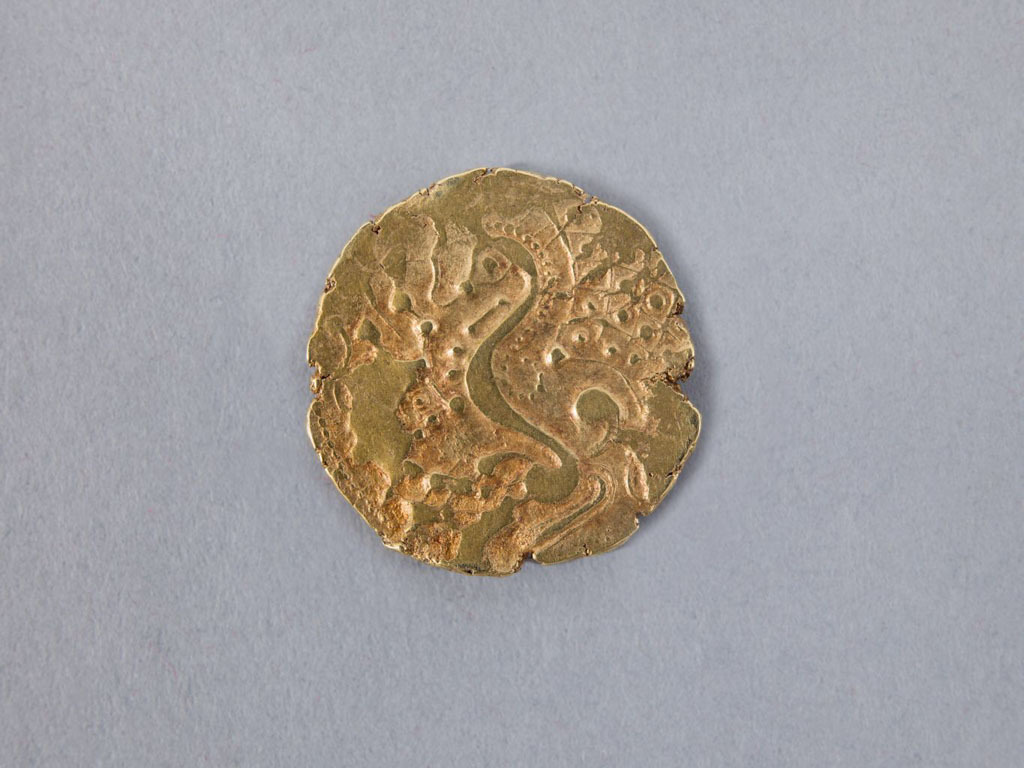This
coin was minted by the Parisii, a tribe in French Gaul that lived along the
Seine River near where Paris is today. They are among the Gallic and Celtic
tribes specifically discussed in Julius Caesar’s Bellum Gallicum (Gallic Wars), written between 58–49 BCE. After
participating in an uprising against Caesar, the Parisii were defeated by the
Romans in 52 BCE, and subsequently all coin production by the Parisii ceased.
On
the obverse, the coin features a profile view of a man facing right. The head
may be a partially abstracted representation of Apollo with a laurel wreath and
long hair or possibly an image of Philip II of Macedon. The reverse shows a
rendering of a rearing horse. There is a net-like design above the horse that
may represent stylized wings of Pegasus, the winged horse in Greek mythology.
The
design of the piece recalls coins not only of Philip II, but also of Alexander
the Great. These Macedonian coins heavily influenced the Parisii as Gallic
individuals had served as mercenaries in their armies. Earlier gold coins from
Gaul directly copied Macedonian coins, but with time they become more schematized.
This particular coin is a class V stater produced by a workshop known as Mint A
by scholars. Such classifications refer to coins that have very similar
appearances and may have been produced using the same equipment.


